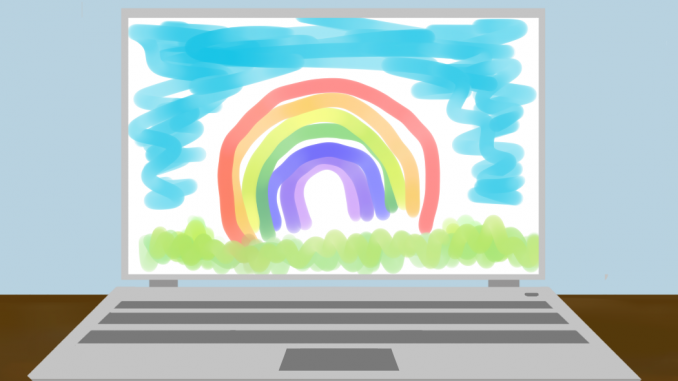
As the COVID-19 pandemic swept across Philadelphia in March, residents searching for hope hatched an idea: decorating their windows with rainbows for children to play eye-spy from house to house during the spring.
Robert Blackson, director of exhibitions and public programs at the Tyler School of Art and Architecture, wanted to find a way for that idea to continue today.
The Double Rainbow Exhibit, a collaboration between Temple Contemporary and the Please Touch Museum, is inviting children from around the city to create rainbows out of any artistic medium they choose, including crayons, paint or decoupage, for a virtual exhibit to be hosted on both partners’ websites beginning on Jan. 1.
“It is important to help people heal, and kids can do that,” Blackson said.
The exhibition will allow children to continue to spread positivity to families affected by the COVID-19 pandemic while using their imagination and creativity to make the rainbows, said Olivia Thomas, the chief learning officer at the Please Touch Museum.
“Drawing rainbows and displaying them encourages children to spread joy in a larger way while also reflecting and discussing what has been a challenging time,” Thomas added.
Children have until Dec. 30 to submit their artwork to the Please Touch Museum, Blackson said.
After the online exhibit, The Please Touch Museum plans to mail the artwork to families in Philadelphia who have lost loved ones to COVID-19.
Blackson believes rainbows are the perfect symbol to help family members cope with loss because they can be a symbol of serenity and a fresh start, he said.
“We all thought that the rainbows were beautiful and a representation of something much stronger,” he added. “Someone who has experienced loss can be positively affected by the rainbows.”
Thomas believes that artwork distributed by children is teaching children to use their hands and display art in order to help people heal from traumatic experiences.
Spencer Stalloni, an art therapy professor, said art therapy is beneficial for children and adults because by expressing themselves and learning new skills, people can learn how to process emotions in a positive way.
“Art therapy is a nonverbal therapy,” Stalloni said. “Sometimes kids and adults tend to have problems talking about their feelings, but they can display their thoughts and feelings through art.”
Stalloni believes this exhibit can help teach children about empathy and understanding during the COVID-19 pandemic, she said.
“I think that kids would benefit from engaging in their creativity right now,” Stalloni said. “Kids have a tendency to be more creative and explore new things.”
Blackson has confidence in this project because art is one of the most important tools for healing that children can use, especially during the COVID-19 pandemic, as it gives them the ability to express themselves in ways outside of reading or writing, he said.
“When they are making art, they aren’t trying to complete a sentence or a thought, they are doing art in the purest fashion,” Blackson said. “It gives them a sense of creativity and individuality.”


Be the first to comment